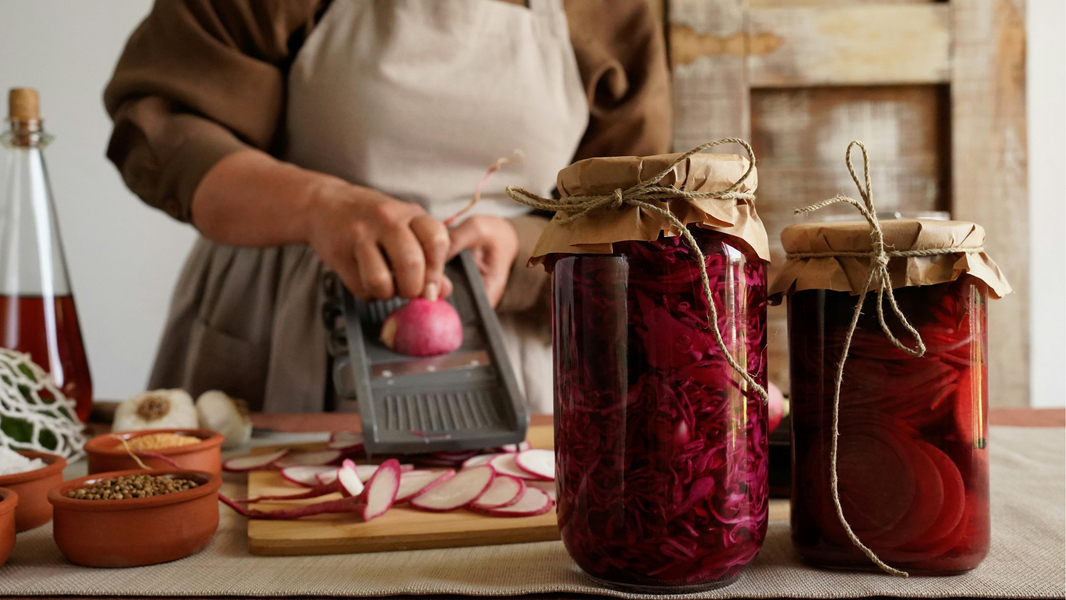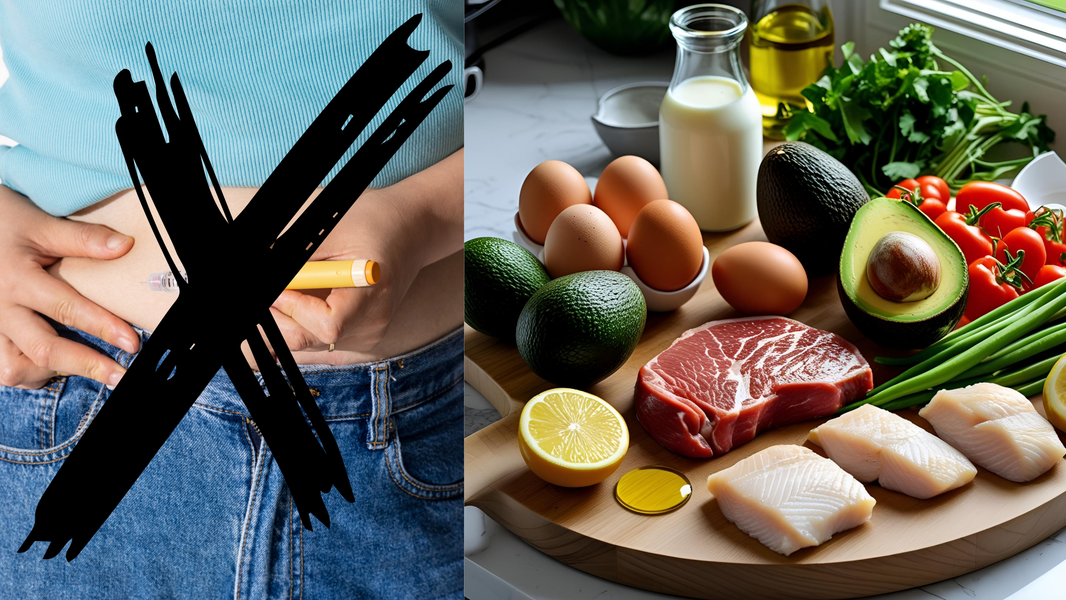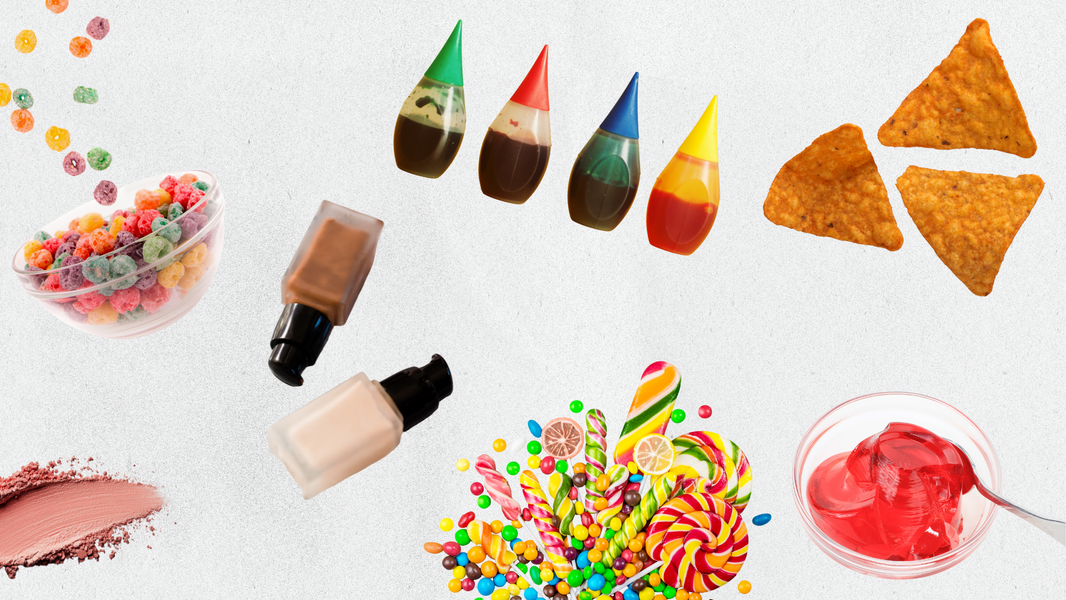What are artificial ingredients?
An “artificial ingredient” simply means an ingredient is man-made and not found in nature. Artificial ingredients are often added to food to “improve” color, flavor, texture, and sweetness or to help increase a product's “shelf-life.”
Some of these ingredients have been shown to promote inflammation within the body and disrupt the gut microbiome, increasing the risk of chronic diseases such as heart disease, obesity, and diabetes. (1)
Are you wondering how to know if something contains artificial ingredients?
Is it packaged in a bag, box, or bottle? In most cases, you should avoid these products during Level 1. They likely contain artificial ingredients that may harm your gut microbiome.
What are some examples of artificial ingredients, and what’s the problem with consuming them?
- Artificial sweeteners are synthetic sugar substitutes such as saccharin (Sweet’N Low), aspartame (NutraSweet, Equal, Sugar Twin), acesulfame potassium (Ace-K), sucralose (Splenda), and advantame.
Artificial sweeteners are commonly viewed as a healthier alternative to sugar because they typically have few to no calories. However, some studies have shown that artificial sweeteners may change the balance of your gut bacteria (2) and can lead to glucose intolerance (3). The FDA has a list of artificial sweeteners, called “high-intensity sweeteners,” approved for use as food additives.
Watch out! Most processed products labeled “sugar-free” will likely contain an artificial sweetener.
- Trans fats or Partially Hydrogenated Oils: the FDA banned these fats in the US in 2018, but some foods on the market may still contain a small amount of trans fat due to the processing methods used. Research has linked trans fats to higher levels of inflammation, higher LDL (bad) and lower HDL (good) cholesterol levels, and heart disease (4).
- Artificial Coloring and Dyes are chemicals used to color foods for marketing or flavoring. Research shows that several common food dyes may cause cancer in animals and people, interfere with children’s behavior and thyroid function, and trigger allergic reactions (5, 6).
- Artificial Flavors are synthetic chemicals created to mimic the taste of a natural ingredient. Artificial flavors are FDA-approved by companies that can show the ingredients are “generally recognized as safe.” Unfortunately, “generally recognized as safe” is a poorly defined term. Artificial flavor formulas often combine untested ingredients to increase sales.
So are natural flavors a better option?
Unfortunately, like artificial flavors, natural flavors are complex mixtures created by specially trained food chemists called “flavorists.” They can contain more than 100 chemicals, including solvents. Food manufacturers aren't required to disclose whether these additives come from natural sources.
Which sweeteners are best to use?
There are plenty of organic and healthy alternatives to satisfy your sweet tooth! In Level 1, we recommend using honey, stevia (liquid if available), or 100% monk fruit (without erythritol).
After Level 1, try using organic products like agave syrup, maple syrup, or local honey from the farmer’s market. These offer a much better substitute for sugar and artificial sweeteners than artificial chemicals produced in a lab.
How to avoid artificial ingredients?
The best way to remove artificial food ingredients from your diet is to focus on eating whole, unprocessed foods. Most whole foods are highly nutritious and naturally free of artificial additives!
References
- Paula Neto HA, Ausina P, Gomez LS, Leandro JGB, Zancan P, Sola-Penna M. Effects of Food Additives on Immune Cells As Contributors to Body Weight Gain and Immune-Mediated Metabolic Dysregulation. Front Immunol. 2017;8:1478. Published 2017 Nov 6. doi:10.3389/fimmu.2017.01478
- Greenhill, C. Not so sweet—artificial sweeteners can cause glucose intolerance by affecting the gut microbiota. Nat Rev Endocrinol 10, 637 (2014). https://doi.org/10.1038/nrendo.2014.167
- Bokulich NA, Blaser MJ. A bitter aftertaste: unintended effects of artificial sweeteners on the gut microbiome. Cell Metab. 2014;20(5):701-703. doi:10.1016/j.cmet.2014.10.012
- Mazidi M, Gao HK, Shivappa N, Wirth MD, Hebert JR, Kengne AP. The relationship of plasma Trans fatty acids with dietary inflammatory index among US adults. Lipids Health Dis. 2017;16(1):147. Published 2017 Aug 4. doi:10.1186/s12944-017-0527-1
- Kobylewski S, Jacobson MF. Toxicology of food dyes. Int J Occup Environ Health. 2012 Jul-Sep;18(3):220-46. doi: 10.1179/1077352512Z.00000000034. PMID: 23026007.
- Kobylewski S, Jacobson MF. Food Dyes A Rainbow of Risks. Center for Science in the Public Interest.






